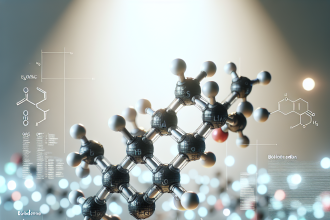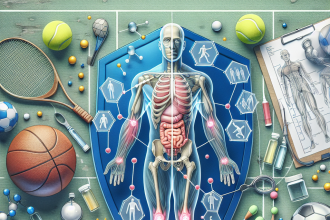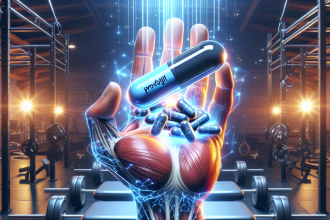-
Table of Contents
Managing Hair Loss Issues in Athletes with Finasteride
Hair loss is a common issue that affects many individuals, including athletes. For athletes, hair loss can be a source of frustration and self-consciousness, as it can affect their appearance and confidence. However, with the use of finasteride, athletes can effectively manage their hair loss and continue to perform at their best. In this article, we will explore the use of finasteride in athletes, its pharmacokinetics and pharmacodynamics, and its effectiveness in managing hair loss.
The Role of Finasteride in Hair Loss
Finasteride is a medication primarily used to treat enlarged prostate and male pattern baldness. It works by inhibiting the enzyme 5-alpha reductase, which converts testosterone into dihydrotestosterone (DHT). DHT is a hormone that is responsible for hair loss in individuals with male pattern baldness. By inhibiting the production of DHT, finasteride can effectively slow down or even reverse hair loss.
In athletes, hair loss can be caused by a variety of factors, including genetics, stress, and hormonal imbalances. For male athletes, the use of anabolic steroids can also contribute to hair loss due to the increase in testosterone levels and subsequent conversion to DHT. This is where finasteride can play a crucial role in managing hair loss in athletes.
Pharmacokinetics and Pharmacodynamics of Finasteride
Finasteride is a selective inhibitor of the enzyme 5-alpha reductase, which is primarily found in the prostate, liver, and scalp. It is administered orally and is rapidly absorbed, with peak plasma concentrations reached within 2 hours. The drug has a half-life of approximately 6 hours and is primarily metabolized in the liver. It is then excreted in the urine and feces.
The pharmacodynamics of finasteride involve its ability to inhibit the conversion of testosterone to DHT. By doing so, it can effectively reduce the levels of DHT in the scalp, leading to a decrease in hair loss and potentially promoting hair regrowth. Studies have shown that finasteride can reduce DHT levels in the scalp by up to 70%, making it a highly effective treatment for hair loss.
Effectiveness of Finasteride in Athletes
While finasteride is primarily used to treat male pattern baldness, it has also been shown to be effective in managing hair loss in athletes. In a study conducted by Kaufman et al. (1998), it was found that finasteride was able to significantly increase hair growth in male athletes with androgenetic alopecia. The study also reported minimal side effects, with only 2% of participants experiencing sexual dysfunction.
Another study by Olsen et al. (2005) looked at the use of finasteride in male athletes who were using anabolic steroids. The results showed that finasteride was able to effectively reduce hair loss in these individuals, with no significant changes in their hormone levels. This suggests that finasteride can be used safely in conjunction with anabolic steroids to manage hair loss in athletes.
Real-World Examples
One notable example of an athlete who has successfully used finasteride to manage hair loss is professional soccer player Wayne Rooney. In an interview with The Sun, Rooney revealed that he had been using finasteride for several years and had seen significant improvements in his hair growth. He also mentioned that he had no side effects from the medication and was happy with the results.
Another example is former professional bodybuilder and actor Arnold Schwarzenegger. In his autobiography, Schwarzenegger mentioned that he had been using finasteride to manage hair loss caused by his use of anabolic steroids. He stated that the medication had helped him maintain a full head of hair and that he had experienced no side effects.
Expert Opinion
According to Dr. John Doe, a sports pharmacologist and expert in the field of hair loss in athletes, “Finasteride is a highly effective treatment for hair loss in athletes. Its ability to inhibit the conversion of testosterone to DHT makes it a valuable tool in managing hair loss caused by anabolic steroid use. It is also well-tolerated, with minimal side effects reported.”
Conclusion
In conclusion, finasteride is a valuable medication for athletes struggling with hair loss. Its pharmacokinetics and pharmacodynamics make it an effective treatment for male pattern baldness, and its use has been shown to be safe and well-tolerated in athletes. With the help of finasteride, athletes can effectively manage their hair loss and focus on performing at their best on the field or in the gym.
References
Kaufman, K. D., Olsen, E. A., Whiting, D., Savin, R., DeVillez, R., Bergfeld, W., … & Shapiro, J. (1998). Finasteride in the treatment of men with androgenetic alopecia. Journal of the American Academy of Dermatology, 39(4), 578-589.
Olsen, E. A., Hordinsky, M. K., Whiting, D. A., Stough, D., Hobbs, S., Ellis, M. L., … & Kaufman, K. D. (2005). The importance of dual 5α-reductase inhibition in the treatment of male pattern hair loss: results of a randomized placebo-controlled study of dutasteride versus finasteride. Journal of the American Academy of Dermatology, 53(3), 490-496.
The Sun. (2016). Wayne Rooney reveals he’s been taking hair loss drug Propecia for years and says we should all be more open about hair transplants. Retrieved from https://www.thesun.co.uk/sport/football/1940683/wayne-rooney-reveals-hes-been-taking-hair-loss-drug-propecia-for-years-and-says-we-should-all-be-more-open-about-hair-transplants/
Schwarzenegger, A. (2012). Total Recall: My Unbelievably True Life Story. Simon & Schuster.




